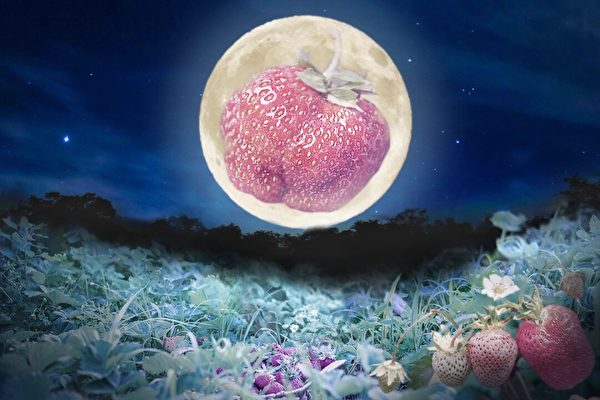As we approach the full moon this month of June, astronomers say that the upcoming full moon will appear extraordinary. Just shortly after the arrival of summer, a honey-colored “Strawberry” moon will rise on the horizon, only a few hours away from the longest day of the year – the summer solstice.
On June 21, the day after the summer solstice on June 20, the Strawberry moon will illuminate the night sky. The Strawberry moon doesn’t always show up in the (post-summer solstice) summer; if it arrives before the summer solstice, it might occur in the spring.
For many reasons, this will be a Strawberry moon unlike any we have seen in years. Here are some insights about the Strawberry moon.
Many wonder about this moon:
Why is it called the “Strawberry moon”? Why does it appear honey-colored instead of strawberry pink? Why is the moon so large and low? How will the summer solstice affect the full moon?
Due to its name, some may expect to see a mature red moon. However, it is not red. The Strawberry moon is just a name for the full moon in June, named after the abundant berries of the month. That’s all there is to it. The name has nothing to do with the shape, size, appearance, or color of the moon.
Native American tribes like Algonquin, Ojibew, Dakota, and Lakota mark the summer fruit strawberry by this name, as strawberries ripen in June. The Haida people use a similar name, Berries Ripen Moon.
Native Americans, colonial-era Americans, and Europeans have given it many other names. Many names are related to berries, blooming, and summer.
The Farmer’s Almanac states that the Ojibew tribe refers to it as the “Big Round Moon When Flowers Open” or the “Garden Moon.” Anglo-Saxon tradition birthed the term “Honey Moon,” which may have been the origin of the honeymoon, a lucky month for weddings being June.
Regarding its honey hue, we expect the Strawberry moon to appear at a particular time and place. Its orange-yellow color is related to atmospheric and astronomical factors, as the full moon will linger near the horizon.
Astronomers explain that the full moon is opposite the sun in various ways. When the sun sets, it rises. When the sun is highest in the year, on the first day of summer (summer solstice), the moon is lowest.
Therefore, with this year’s summer solstice being so close to the Strawberry moon (just one day apart), the moon will be very near the sky’s lowest point, meaning it will barely rise above the horizon when it reaches the zenith.
The Farmer’s Almanac notes that in Fairbanks, Alaska, and Iceland, this Strawberry moon won’t rise at all.
However, in more southern locations, it will be visible but will hang low, creating some unique phenomena, giving it vibrant colors and an unusually large appearance. This is an optical illusion.
Astronomers state that Earth’s atmosphere acts as a filter, blocking out blue light, so when the moon hovers near the horizon, it may appear honey-colored. Sunlight appears yellow or rust-colored as it passes through our atmosphere before illuminating the moon with its golden hue.
Furthermore, due to its proximity to the horizon, the Strawberry moon might seem larger, or appear larger. The moon illusion theory explains that it is a simple optical effect. It appears closer to terrestrial objects like buildings or trees, creating a psychological illusion of its size.
Therefore, the summer solstice will make this Strawberry moon exceptionally unique, the lowest moon we have seen in years.
For those in the Northern Hemisphere, that’s how it is.
In the Southern Hemisphere, everything is opposite. Their summer is winter for the Northern Hemisphere, and their winter is summer for the Northern Hemisphere. Thus, the full moon during the summer solstice will be at its highest point. Additionally, they have different names corresponding to the seasons, unlike the Strawberry moon.
For many people above the zero latitude, they will witness the June full moon, appearing spectacular on our horizon, looking particularly grand. Regarding the Strawberry moon, there’s an age-old question:
How low can it descend?

